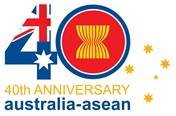Australia’s prospering partnership with ASEAN

On a recent visit to South East Asia, I was reminded of the strength of Australia’s partnership with the countries of ASEAN – the Association of Southeast Asian Nations.
In Malaysia I met some of the 300,000 alumni of Australian universities, many now serving in key government and business positions.
In the Philippines I saw first-hand our joint relief effort in the wake of Typhoon Haiyan and was joined by hundreds of school children to celebrate a new $150 million Australian initiative for basic education needs.
In Vietnam, I was reminded further of our cooperation with projects such as the Australian-Asian Development Bank co-funded Cao Lanh Bridge that will connect communities in an economy of nearly 90 million people.
The ten nations of ASEAN have the potential for strong economic growth that will dramatically lift living standards across South East Asia, according to a recent report by the World Bank.
For example, the report highlighted studies showing that ASEAN could boost the welfare of its members by 5.3 per cent or US$69 billion and economic growth by up to one percentage point through deeper economic integration.
Australia is willing and able to be a partner in the economic agenda for this region and to increase our existing deep economic engagement, that has already seen two-way trade increase from A$45 billion to A$92 billion between Australia and ASEAN over the past decade.
The new Australian Government has adopted a policy of ‘economic diplomacy’ as a key platform of our foreign policy to ensure we unlock the productivity enhancing benefits of closer trade and investment ties in our region. Just as traditional diplomacy aims for peace, economic diplomacy aims for prosperity.
It is timely that we reflect on Australia’s partnership with ASEAN, as we reach the milestone this month of 40 years of bilateral relations.
We have worked with all ASEAN members to realise our countries’ shared aspirations “to live in a region of lasting peace, security and stability, sustained economic growth, shared prosperity and social progress”.
ASEAN countries have made great progress towards this goal, and together are working toward the realisation of an historic, and welcome, ‘ASEAN Community’ by the end of 2015.
The nations of ASEAN have in recent years grown at twice the rate of world economic growth, doubling their share of global GDP and reducing poverty significantly, by up to half in some cases.
They have led the way in developing regional security architecture that is fostering a cooperative region in which states act consistently within international law, enjoy freedoms of navigation and overflight and are free from coercion and intimidation.
And they are strengthening their capacity to respond to natural disasters, through better coordination of their relief efforts and those of partners like Australia.
I am determined to increase our engagement in our neighbourhood.
The Australian Government has launched the New Colombo Plan to support young Australians to study and undertake internships in the region. I will be inviting all ASEAN countries to build on this year’s two pilot locations of Singapore and Indonesia, from 2015, complementing Australia’s extensive education programs with the region.
I also want to work with ASEAN to strengthen regional cooperation, in particular through the East Asia Summit. It has the right mandate and membership for enabling the region to deal with strategic issues – be they security, trade or financial.
And as a partner to ASEAN’s Coordinating Centre for Humanitarian Assistance, Australia will continue to work with ASEAN to ensure timely and effective responses to disasters.
I am personally committed to Australia’s relationship with ASEAN and its member states. So much so that I will be visiting all ten ASEAN countries before our leaders meet at a Commemorative 40th anniversary Summit in Nay Pyi Taw later this year.
Australia’s future lies in our region – our geography is our destiny.
